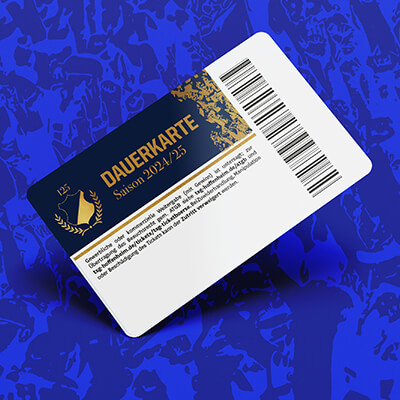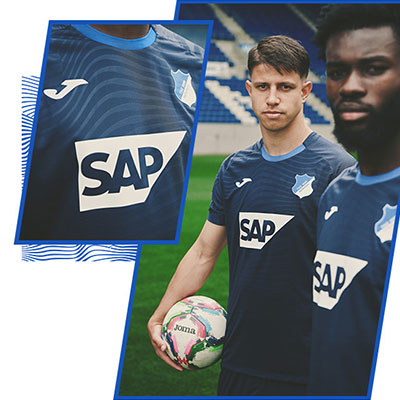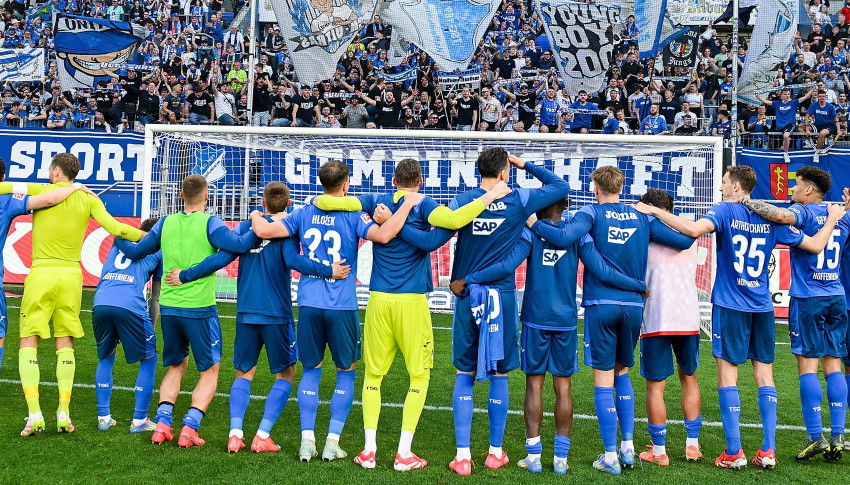Show off your feet
A heavy burden
More than 100 years ago, football boots made of leather weighed 700 grams. When they got wet and filled up with water, the players quickly found they had more than a kilo of weight on their feet. In 2016, adidas presented the adizero 99g, claiming it was the lightest football boot in the world, weighing in at only 99 grams. The model was a strictly limited edition – there were only 299 pairs worldwide.
Material matters
Whereas the shoes were always made of leather in the past, today's high-tech models are mostly made from plastic. That brings benefits not only in terms of weight, but also in terms of care and cleaning. While the leather shoes had to be painstakingly maintained with a lot of grease, today's plastic models are much easier to care for.
Screw-in studs – the Miracle of Bern
In 1954, Germany won the World Cup for the first time. The 3-2 victory in the final against Hungary is known as the Miracle of Bern in German sports history. The success is intrinsically linked to the ground-breaking innovation made by the kit manager at the time, Adi Dassler, who had invented and developed boots with screw-in studs before the tournament. Thus, it was possible for the players to adapt their shoes to the respective weather conditions. In the half-time break in the final, the German players changed their studs due to the increasing wet conditions and secured an important advantage thanks to their greater stability on their feet. Ultimately, that brought the World Cup to Germany – and also saw Adi Dassler and his brand adidas conquer the world.
Special messages
Professional footballers like to use their footwear as a way to send greetings, messages or for other sayings. God-fearing Brazilian Kaka had "Jesus in first place” on his boots, while Lionel Messi had "La Mano de Dios” ("The Hand of God") inscribed on his shoes in honour of Diego Maradona. Fashion-conscious David Beckham had a new inscription for each game, and for the 2002 World Cup in Japan and South Korea he used far-eastern characters. Private greetings and expressions of respect can often also be found on football boots: Toni Kroos has worn the names of his dogs Julius and Lennox on his shoes, and Bastian Schweinsteiger's "Liebling" next to the Serbian flag was a tribute to his girlfriend at the time and now wife Ana Ivanovic. Italian Mario Balotelli, who is famous for his extravagances, has had the message "Bye Bye Germania" on his boots in reference to his two goals against Germany in the semi-finals of Euro 2012. Andrej Kramarić prefers something a little less provocative: Hoffenheim's record goalscorer has his initials and shirt number on his boots alongside the Croatian flag.
Expiry date
In terms of service life, professionals have very different preferences when it comes to their boots. Franz Beckenbauer, for example, was known for always wearing his boots up to the absolute limit. In the Sports and Olympic Museum in Cologne, you can see an adidas Cosmos worn by the "Kaiser" in 1970: the tip at the front has burst open and the rest is full of holes and haggard. England international John Terry, however, couldn’t change his boots enough – he used three pairs every game. "I wear a new pair to warm up, a new pair in the first half and then a new pair in the second half", the former Chelsea defensive linchpin once said to British TV broadcaster Sky Sports.
Big foot
Former Czech striker Jan Koller, who spent several years at Borussia Dortmund, stood out not just due to his height of 2.02 metres (6'7"). His boots also had to be XXL: Koller wears size 50 (UK 15). In contrast, Gerd Müller, who recently passed away at the age of 75, showed you don’t need a big foot to score goals: the Bomber wore a size 38 (UK 5.5) shoe. In games, however, he wore size 41 (UK 8), because that "helped him turn better".
Colourful diversity trending
Black – previously the only colour used – has long since outlived its usefulness when it comes to football boots. The flashier, the better is the motto for most professionals. Whether red, blue, purple, green, orange or pink – it has to be colourful. And there is no holding back for the sake of good taste: Argentinian Kun Agüero wore a pair of PUMA boots during the 2014 World Cup, in which the right boot was pink and the left was light blue/turquoise. "This makes the players who wear these boots stand out more" was the marketing strategy behind it. Joma revolutionized the world football boots market in 1998 with its "El color en el futbol" campaign. As part of the campaign, Fernando Morientes from Real Madrid combined his club's iconic white kit with red boots. One of the first footballers to champion exotic boots was Günter Netzer, who was ahead of his time in terms of fashion – and not only in terms of his hairstyle: he wore blue-and-yellow Pumas.
Fine-tuning for perfect manoeuvrability
The times when professional footballers made do with the prefabricated (screw-in) studs of the different models are long gone. "It's all in the mix" is the new motto, and the kit managers at clubs have evolved into excellent shoemakers. They work with the suppliers provide the players with exclusive and the best possible combinations. So many professionals – including those at TSG - wear mixed models, often with six plastic and six aluminium studs. This creates the perfect mix of mobility and stability on pitches that are often heavily watered before the game. The length of the studs can also be tailored to the individual situation. General statements are hard to make due to the personal preferences of each player, but lightweight players typically use 13 millimetre-long studs, while heavier players (especially goalkeepers and defenders) prefer 16 millimetre studs. And not all studs are made equal – there are special versions for all types of pitches:
- AG – artificial ground (artificial grass, rather elongated studs)
- FG – firm ground (natural grass, wider studs with greater distances between them)
- HG – hard ground (artificial grass and ash, short, hard studs)
- SG – soft ground (mostly wet, soft surfaces such as grass and ash, classic studs)
- TF – turf (several small studs, all-rounders, especially hard surfaces)
- IN – indoor
The quirks of the stars
Several football players are superstitious and have their very own quirks – and that is all the more true when it comes to their football boots. Bastian Schweinsteiger moistened his shoes and socks before each game, "to get a better feel for the ball". Toni Kroos, on the other hand, always plays in white boots and only trusts one person to care for his boots: himself. "Because even the smallest bit of dirt bothers me," as the Real Madrid maestro once said. For eight years, Kroos has opted for adidas 11pro model boots, which are now made exclusively for him: "I will never play with another boot in my career."






















